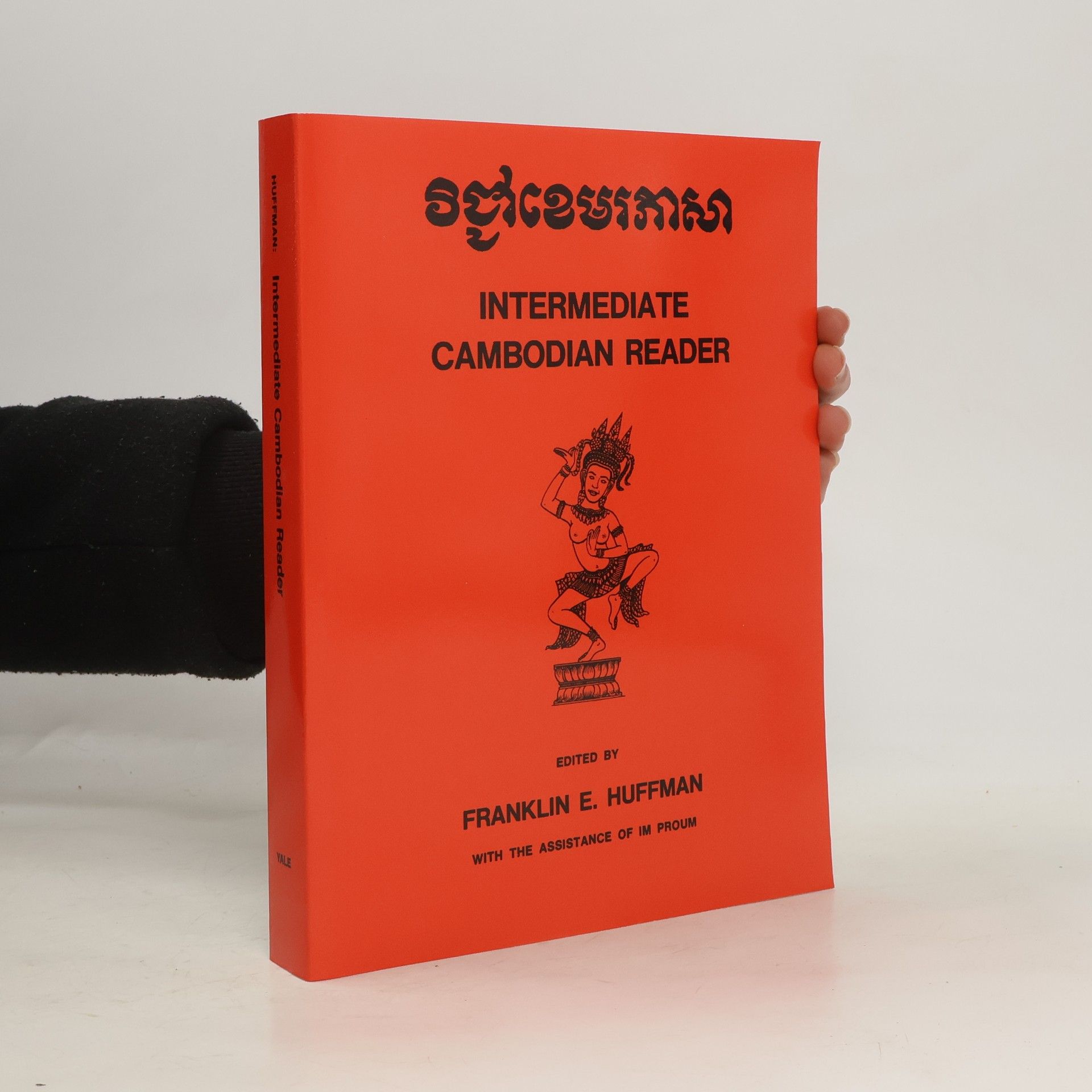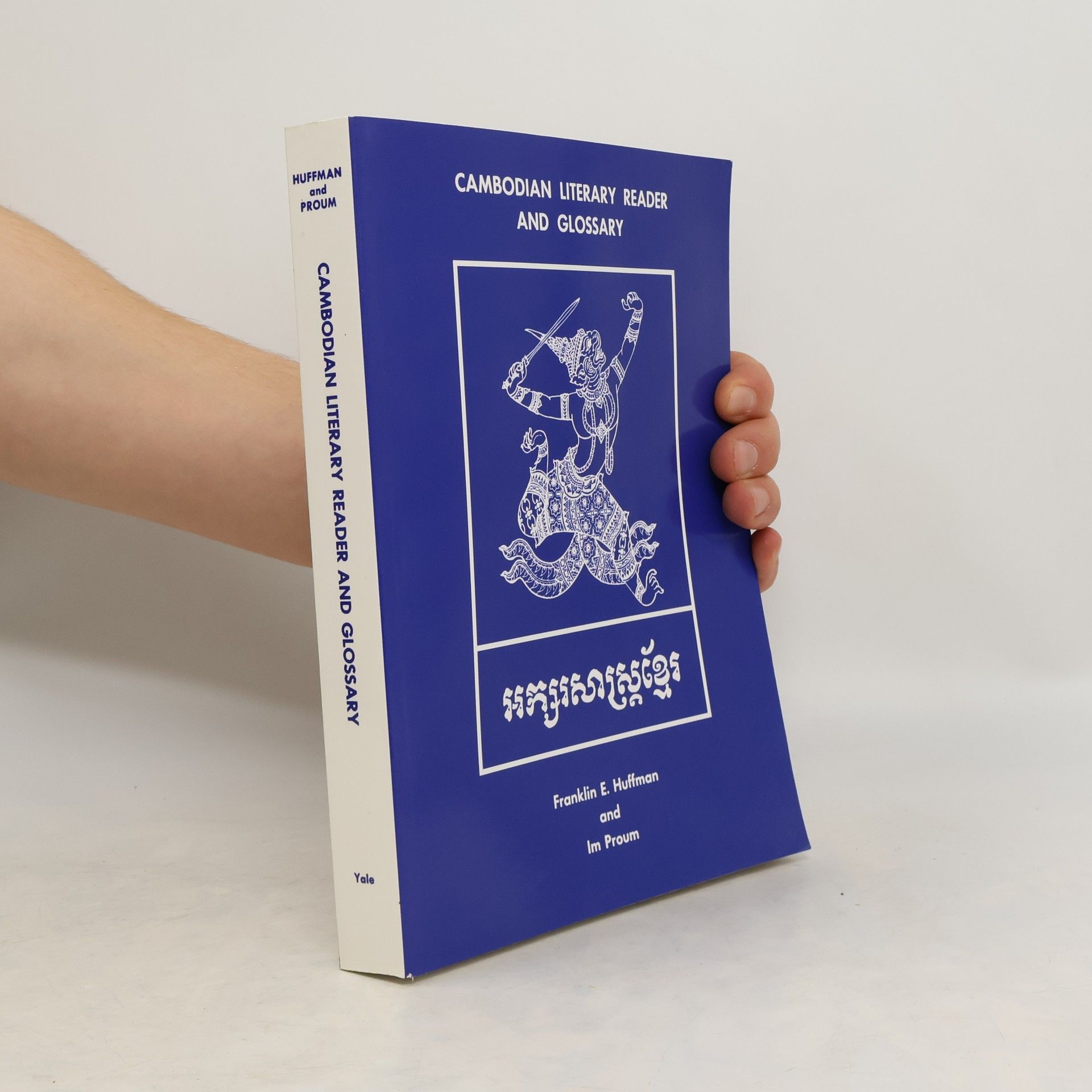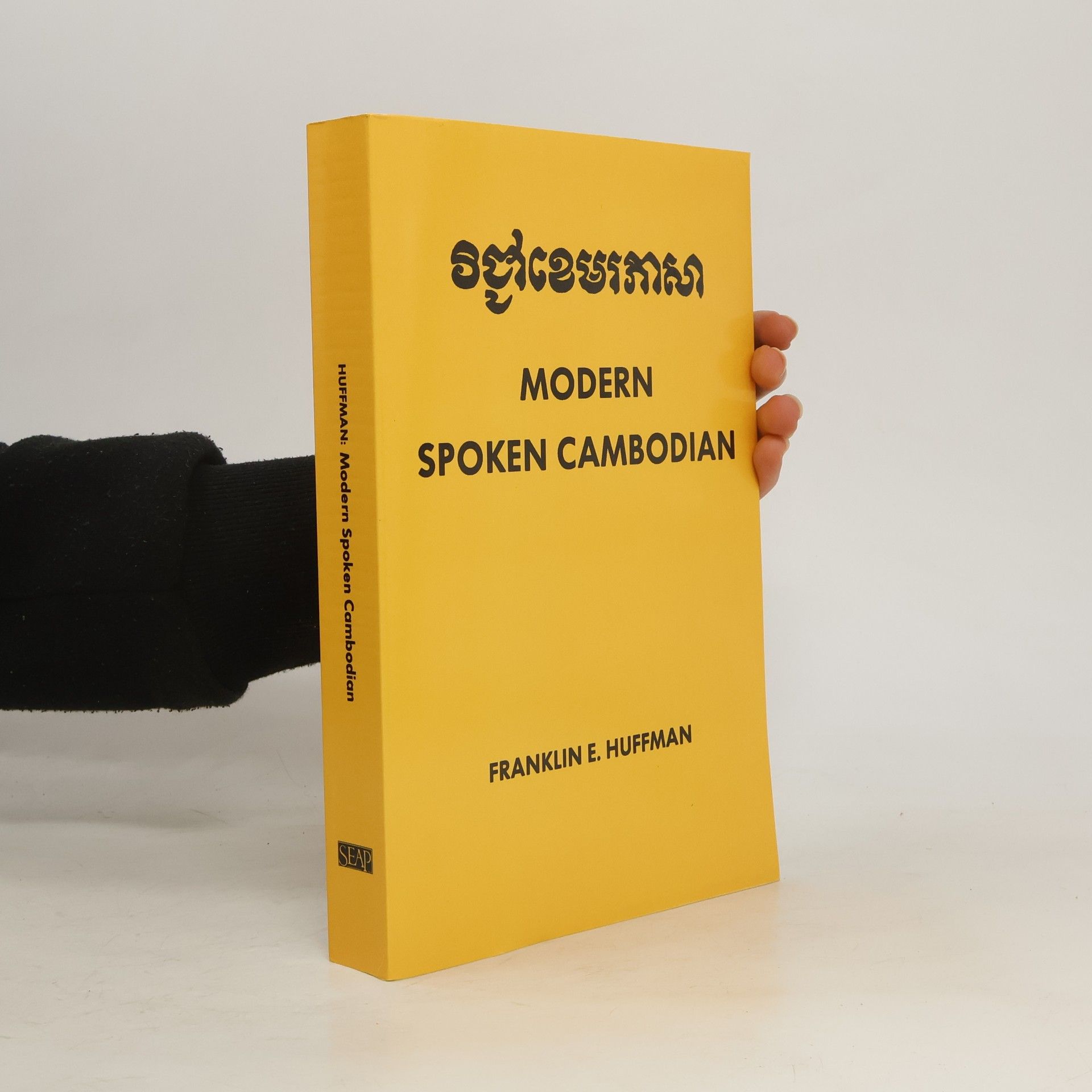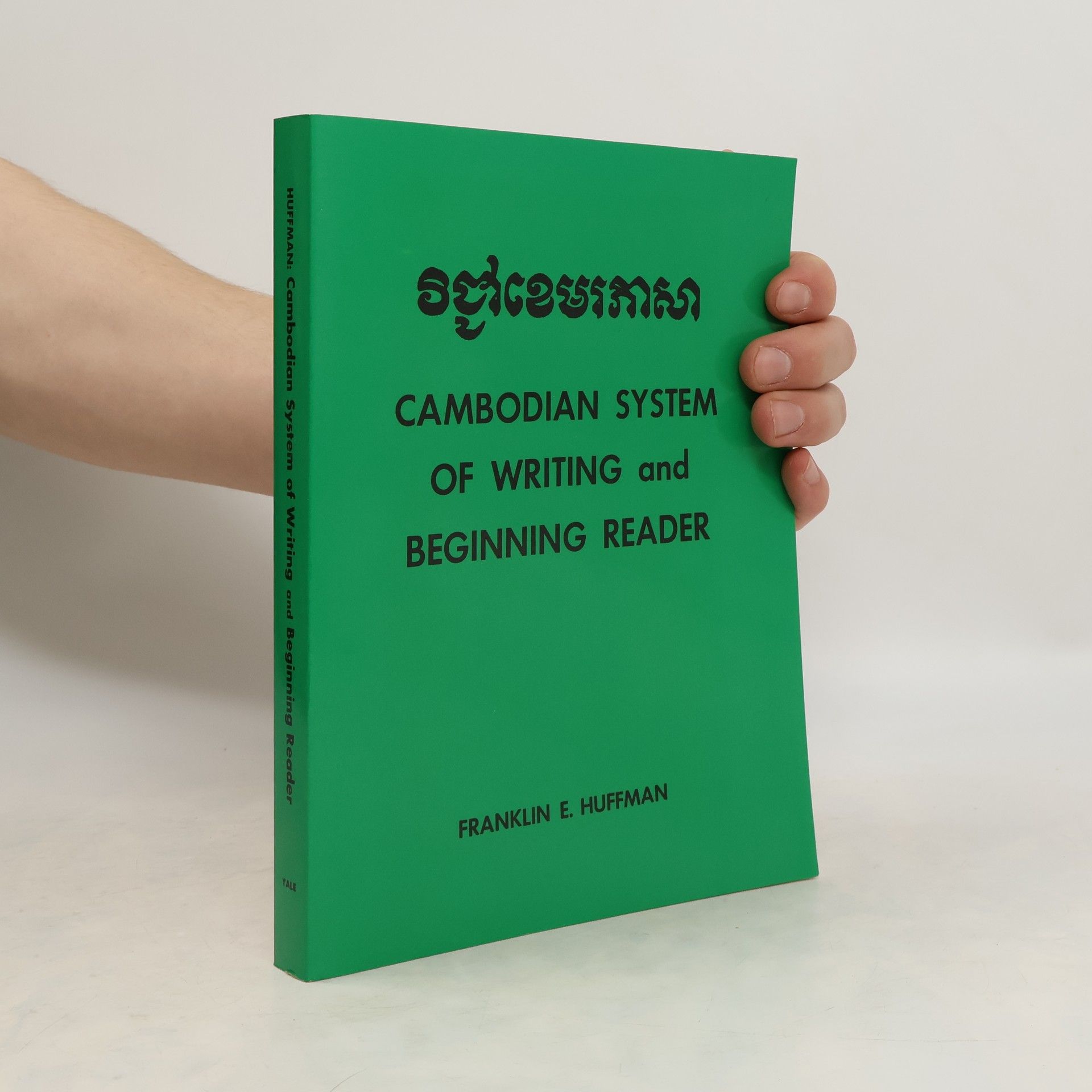The reader contains 32 selections from some of the most important and best-known works of Cambodian literature in a variety of genres - historical prose, folktales, epic poetry, didactic verse, religious literature, the modern novel, poems and songs, and so forth. It concludes with a bibliography of some sixty items on Cambodian literature. The glossary combines the 4,000 or so items introduced in this reader with the more than 6,000 introduced in the previous two readers.
Franklin E. Huffman Livres




Modern Spoken Cambodian
- 451pages
- 16 heures de lecture
Originally published by Yale University Press, 1970. To order accompanying CDs for this book, contact the Language Resource Center at Cornell University (http: //lrc.cornell.edu).
This is the third in a series of Cambodian readers prepared by Franklin Huffman and Im Proum, following their Cambodian System of Writing and Beginning Reader and Intermediate Cambodian Reader. The reader contains thirty-two selections from some of the most important and best-known works of Cambodian literature in a variety of genres – historical prose, folktales, epic poetry, didactic verse, religious literature, the modern novel, poems and songs, and so forth. The introduction is a general survey in English of Cambodian literature, and each section has an introduction in Cambodian. For pedagogical reasons, the selections are presented roughly in reverse chronological order, from modern prose to the very esoteric and somewhat archaic verse of the Ream-Kie (the Cambodian version of the Ramayana). The reader concludes with a bibliography of some sixty items on Cambodian literature.The glossary combines the 4,000 or so items introduced in this reader with the more than 6,000 introduced in the previous two readers, making it the largest Cambodian-English glossary compiled to date. The definitions are more general and complete than one usually finds in a simple reader glossary, in which definitions are normally context-specific. Because the glossary is so useful in itself, it is being made available separately as well as bound with the reader.
This book is a sequel to the author’s Cambodian System of Writing and Beginning Reader, published by the Yale University Press in 1970. It is intended to develop the student’s ability to the point of reading unedited Cambodian texts with the aid of a dictionary. Part One consists of thirty-seven reading selections in Cambodian, graded in length and difficulty, from publications by Cambodia’s leading writers and scholars. It includes articles on Cambodian history, culture, and geography; Cambodian folktales; newspaper articles and editorials; and modern Cambodian fiction. Each selection is followed by a list of the vocabulary items not previously introduced, along with their definitions. Part Two consists of a final alphabetical Cambodian-English glossary containing not only the 4000 vocabulary items introduced in this volume, but also the 2000 vocabulary items in the preceding Cambodian System of Writing and Beginning Reader. This comprehensive glossary, besides rendering the book useful independently of the preceding volume, is particularly important in view of the present lack of a satisfactory Cambodian-English dictionary for students to use.